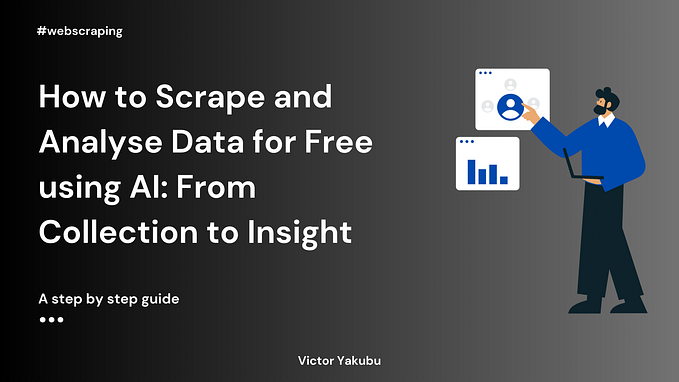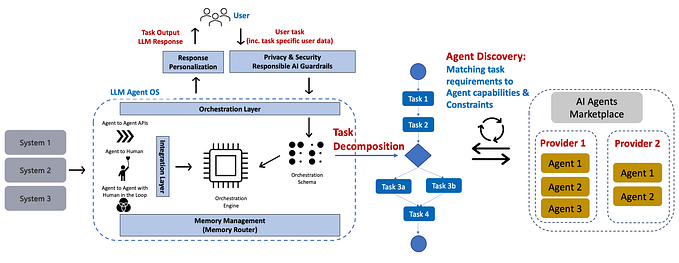Machine Learning: Popular Libraries and Frameworks (Part 1)
An overview of industry-standard frameworks, modules, and libraries used by Machine Learning practitioners.

The field of Machine Learning amid other popular fields in computer science is quite broad which hinges on the application of many complex algorithms based on mathematical and statistical equations.
It could be burdensome sometimes to code an algorithm from scratch to solve every unique Machine Learning problem we come across. Doing that would be a real pain-in-the-neck especially for newbies in the field. That is why the use of libraries and tools is recommended because they are more efficient and bug-free as they have been in use for a long time by experts in various industrial applications.
Similarly, it aids beginners to get profound insights into how the popular algorithms work in real-life industrial applications.
In this part series, we will be talking about a sample of popular libraries that are an indispensable part of a Machine Learning practitioner's arsenal to research and write complex programs while saving themselves from writing a lot of redundant code.
We’ll focus on the Machine Learning libraries unique to the Python programming language.

Why Python?
Python is becoming popular day by day and has replaced many popular languages in the industry. The simplicity of python has attracted many developers to build a vast number of libraries for Machine Learning and Data Science, and for this reason, Python has grown to become the most preferred programming language for machine learning. Other important reasons for Python’s popularity over other languages include:
- Python’s syntax is very simple and high level when compared to other languages such as Java, C, and C++, therefore it aids machine learning practitioners to focus their attention more on the algorithms and model workflow rather than the complex syntaxes of the language.
- Code solutions can be achieved with fewer lines.
- Python is popularly known as a Beginner’s language because of its simplicity.
- Python has a vast collection of libraries for numerous applications.
- Portability, as it is compatible with many use areas.
Well that being said, I guess we have some intuition on why we will be discussing the popular libraries and tools for Machine Learning based on the Python programming language. Some of the popular and best Machine Learning libraries for Python are :
1. NumPy

The NumPy library is very important for machine learning and data science. Of course, it is one of the greatest Mathematical and Scientific computing library which was built with python originally in 2006 by Travis Oliphant and is presently managed by the NumPy community. The library aids python developers to save a lot of time on scientific computations that involve vast matrix-based calculations in mere milliseconds which is an integral part of machine learning. This is made possible due to the implementation of the NumPy arrays in the C programming language.
One of the most unique features of NumPy is its Array interface which is grossly used to represent images, sound waves, and many other raw binary streams as arrays of real numbers with N dimensions.
Install NumPy:
The prerequisite for installing Numpy on your computer is python (at least the python3 version is quite okay). It can be installed with python-pip (a standard package management system that is used to install and manage other software modules) and conda on the anaconda framework.
Install NumPy with pip:
pip install numpyInstall NumPy with conda :
#it is recommended to use a virtual environment
conda create -n venv
conda activate venv#install from conda-forge
conda config --env --add channels conda-forge#install NumPy
conda install numpy
2. Pandas

The popular Pandas library is a go-to machine learning library when it comes to dealing with an enormous density of tabular data. It is grossly used for data analysis with support for fast, flexible, and expressive data structures designed to work on both “relational” or “labeled” data. It is an open-source Python package that is built on top of the Numpy library, which provides support for multi-dimensional arrays.
As one of the most popular data-wrangling packages for python, Pandas works well with many other machine learning and data science modules inside the Python ecosystem.
Here are some of the features unique to the pandas library:
- Handling of data
- Alignment and indexing
- Handling missing data
- Cleaning up data
- Input and output tools
- Multiple file formats supported
- Merging and joining of datasets
- A lot of time series
- Optimized performance
- Visualization
- Grouping of data
- Perform mathematical operations on the data
- Python support
Install Pandas:
Install pandas with pip:
pip install pandasInstall pandas with conda :
#always use a virtual environment
conda create -n venv
conda activate venv#install from conda-forge
conda config --env --add channels conda-forge#install Pandas
conda install pandas
3. Scikit-Learn

The Scikit-Learn library was previously known as scikit-learn project started as a Google Summer of Code project by French data scientist David Cournapeau.
The Scikit-Learn library is a commercially available open-source python library that is built on some popular libraries you might be already familiar with which include; NumPy, SciPy, and matplotlib. It is quite a simple and efficient tool for data mining and data analysis. It provides many unsupervised and supervised learning algorithms used to implement machine learning models including statistical modeling. It also provides functionality for dimensionality reduction, feature selection, feature extraction, ensemble techniques which are used for data analysis and manipulations, and as well as inbuilt datasets.
The scikit-learn library is accompanied by numerous functionalities that include:
- Regression, including Linear and Logistic Regression
- Classification, including K-Nearest Neighbors
- Clustering, including K-Means and K-Means++
- Preprocessing, including Min-Max Normalization, Linear Encoder
- Data Splitting
- Model selection
- Bagging
- Model Boosting
- Principal Component Analysis (PCA)
- Feature Extraction
- Scaling, Standardization, and Normalization
Install Scikit-learn:
Install scikit-learn with pip:
pip install scikit-learnInstall scikit-learn with conda :
#always use a virtual environment
conda create -n venv
conda activate venv#install from conda-forge
conda config --env --add channels conda-forge#install scikit-learn
conda install scikit-learn
4. matplotlib

Matplotlib is an open-source drawing library introduced by John Hunter in the year 2002 which supports various drawing types. It is an amazing visualization library in Python for 2D plots of arrays that include generating plots, histograms, bar charts, box plots, and other types of charts with just a few lines of code. It also provides an object-oriented API that enables it, in extending the functionality to put the static plots in applications by using various Python GUI toolkits available like Tkinter, PyQt, etc.
Here are some of the features unique to the matplotlib library:
- It is used as a data visualization library for the Python programming language.
- It provides quite the simplest and most common way to plot data in python.
- It provides such tools that can be used to create publication-standard plots and figures in a variety of export formats and various environments across platforms.
Install matplotlib:
Install matplotlib with pip:
pip install matplotlib Install matplotlib with conda :
#always use a virtual environment
conda create -n venv
conda activate venv#install from conda-forge
conda config --env --add channels conda-forge#install matplotlib
conda install matplotlib
Thanks for reading ❤️
Please feel free to leave your comments and ideas on the post.
I can imagine how helpful this post has been, do leave a clap 👏 below a few times to show your support for the author!
More content at plainenglish.io








